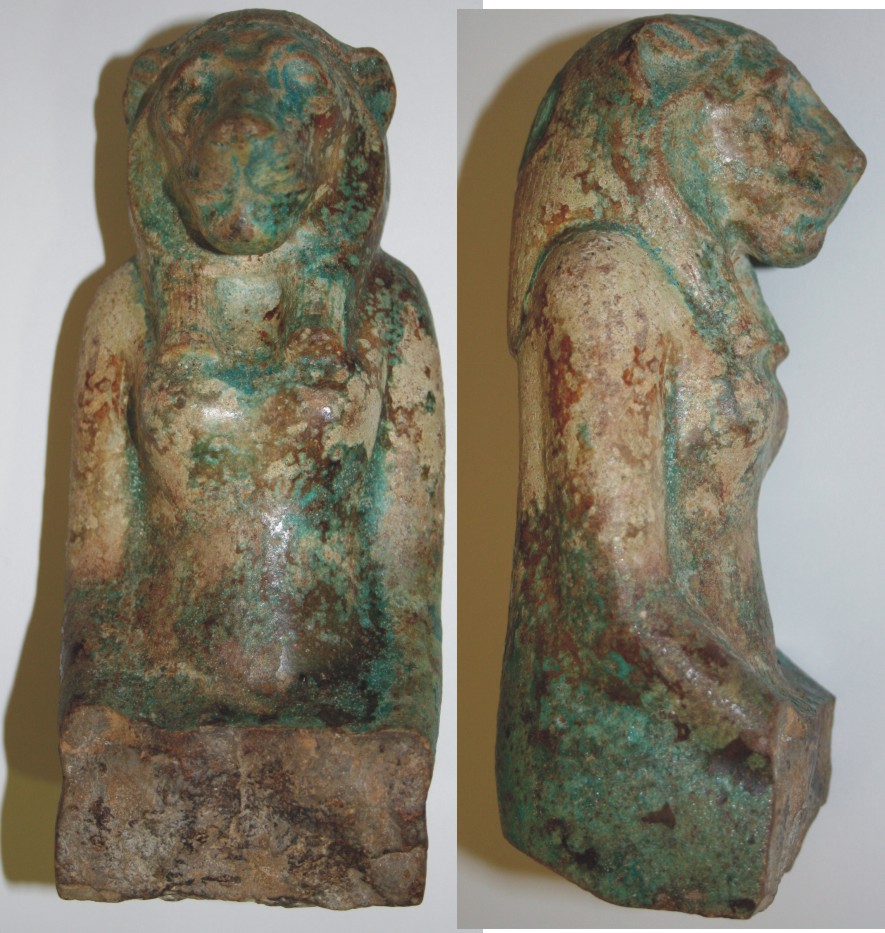W496
W496

This glazed stone statue might be Bastet, Mut or Sekhmet. All were goddesses shown with cat or lion-heads (click here for other examples in the Egypt Centre). It stands 18.6cm high and was presumably made as a votive offering to a god.
Bastet was associated with fertility, motherliness and protection. She is often shown as a cat or sometimes as a cat headed woman carrying a sistrum (you can see a sistrum upstairs in the section on music).
Sekhmet seems to have originated in Letopolis but was soon connected to Memphis. Her name is ‘She who is powerful’. She was a daughter of the sun god Re. A myth found in the royal tombs at Thebes tells of her being sent by Re to kill humankind for rebelling against him. The land was red with blood and Re urged her to stop but she continued. However she is tricked into drinking beer coloured red, thinking it was blood. She then becomes drunk and stops. Her intoxication is celebrated at Hathor’s festival by the drinking of red beer. In some versions she turns into Bastet or Hathor once pacified. Sekhmet was also said to responsible for disease.
Mut is sometimes shown as a vulture goddess. Like Isis and Hathor she was considered the mother of the reigning king. She also had an aggressive side and could be linked to Sekhmet.
Before belonging to Sir Henry Wellcome, this object was owned by the Theosophical Society, founded by the Russian lady Helena Blavatsky (1831-1891) in 1875. Her teaching synthesised many ancient and modern religious beliefs including those of ancient Egypt. It was presumably used by the Theosophical Society as a religious artefact.